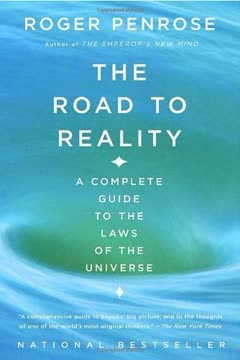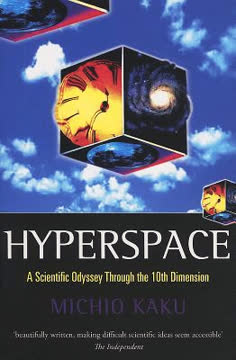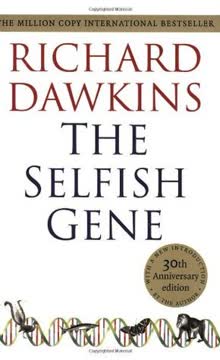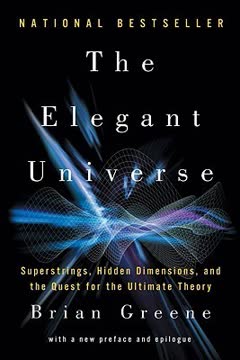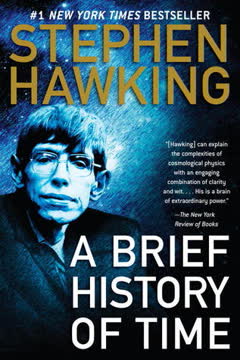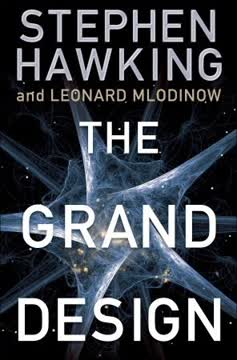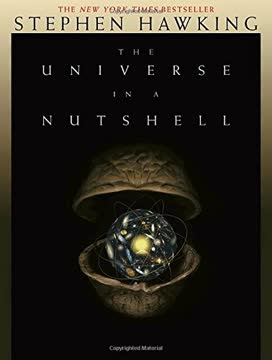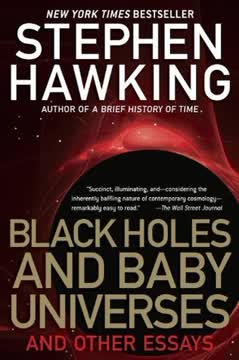اہم نکات
1. وقت اور جگہ مطلق نہیں ہیں
"وقت کو ایسے سمجھا جاتا تھا جیسے یہ ایک سیدھی ریلوے لائن ہو جس پر صرف ایک ہی سمت میں جایا جا سکتا ہے۔"
انقلابی نقطہ نظر۔ آئنسٹائن کے نظریہ اضافیت نے وقت اور جگہ کے بارے میں ہماری سمجھ کو بنیادی طور پر تبدیل کر دیا، انہیں مطلق، مستقل تصورات سے نسبتاً، متحرک ابعاد میں تبدیل کر دیا جو مختلف مشاہدین کے لیے مختلف تجربات کی صورت میں سامنے آتے ہیں۔
اہم نتائج:
- وقت عالمگیر نہیں بلکہ ہر مشاہدہ کرنے والے کے لیے ذاتی ہے
- مختلف رفتار سے حرکت کرنے والے مشاہدین وقت کو مختلف انداز میں ناپیں گے
- روشنی کی رفتار تمام مشاہدین کے لیے مستقل رہتی ہے
تجرباتی شواہد۔ مائیکل سن-مورلی تجربے جیسے مشاہدات نے یہ ثابت کیا کہ روشنی کی رفتار مشاہدہ کرنے والے کی حرکت سے قطع نظر مستقل ہے، جو مطلق وقت اور جگہ کے کلاسیکی تصورات کو چیلنج کرتا ہے۔
2. کائنات کی ایک ابتدا اور پھیلنے کی فطرت ہے
"اگر کائنات کو خارج کرنے کے اصول کے بغیر تخلیق کیا گیا ہوتا تو کوارک علیحدہ، واضح پروٹون اور نیوٹران نہیں بناتے۔"
بگ بینگ نظریہ۔ کائنات تقریباً 13.8 ارب سال پہلے ایک انتہائی کثیف، گرم حالت سے وجود میں آئی، تیزی سے پھیلتے ہوئے اور پیچیدہ طبیعیاتی عملوں کے ذریعے ترقی کرتی رہی، جس نے آخرکار کہکشاؤں، ستاروں، اور پیچیدہ ڈھانچوں کو تخلیق کیا۔
کائناتی ترقی:
- ابتدائی حالت انتہائی گرم اور یکساں تھی
- بتدریج ٹھنڈک نے ایٹمی ڈھانچوں کی تشکیل کی اجازت دی
- پھیلاؤ جاری ہے، ممکنہ طور پر ہمیشہ کے لیے
- کہکشائیں کشش ثقل کی وجہ سے بنی
مشاہداتی تصدیق۔ ایڈون ہبل کی دریافت کہ دور دراز کہکشائیں ہم سے دور جا رہی ہیں، پھیلتی ہوئی کائنات کے ماڈل کے لیے تجرباتی شواہد فراہم کرتی ہے۔
3. کوانٹم میکانکس عدم یقینیت اور احتمال متعارف کرتی ہے
"کوانٹم میکانکس کسی مشاہدے کے لیے ایک ہی واضح نتیجہ کی پیش گوئی نہیں کرتی۔ اس کے بجائے، یہ مختلف ممکنہ نتائج کی تعداد کی پیش گوئی کرتی ہے اور ہمیں بتاتی ہے کہ ان میں سے ہر ایک کا کتنا امکان ہے۔"
احتمالی کائنات۔ کلاسیکی طبیعیات کے برعکس، کوانٹم میکانکس یہ تجویز کرتی ہے کہ بنیادی ذرات احتمالی حالتوں میں موجود ہیں، جس کے نتیجے میں کسی بھی دیے گئے مشاہدے کے لیے متعدد ممکنہ نتائج ہوتے ہیں۔
اہم کوانٹم اصول:
- ذرات ایک ہی وقت میں متعدد حالتوں میں موجود ہو سکتے ہیں
- مشاہدہ ذرات کی حالت پر اثر انداز ہوتا ہے
- مقام اور رفتار کی درست پیمائش ناممکن ہے
- فطرت میں بے ترتیبی موجود ہے
انقلابی نتائج۔ یہ نقطہ نظر کائنات کے متعین نظریات کو چیلنج کرتا ہے، یہ تجویز کرتا ہے کہ بنیادی عدم یقینیت حقیقت کی ایک اہم خصوصیت ہے۔
4. کشش ثقل کائنات کے ڈھانچے کی تشکیل کرتی ہے
"کشش ثقل چار قوتوں میں سے سب سے کمزور ہے؛ یہ اتنی کمزور ہے کہ اگر یہ دو خاص خصوصیات نہ رکھتی تو ہم اسے بالکل بھی محسوس نہ کرتے: یہ بڑی دوریوں پر اثر انداز ہو سکتی ہے، اور یہ ہمیشہ کشش رکھتی ہے۔"
کشش ثقل کا اثر۔ اگرچہ یہ بنیادی قوتوں میں سب سے کمزور ہے، کشش ثقل کائناتی ڈھانچوں کی تشکیل میں اہم کردار ادا کرتی ہے اس کی طویل فاصلے کی، جمع اثرات کے ذریعے۔
کشش ثقل کی خصوصیات:
- یہ تمام مادے پر عالمگیر طور پر اثر انداز ہوتی ہے
- یہ کشش کرتی ہے نہ کہ دھکیلتی ہے
- بڑے پیمانے پر کائناتی ڈھانچوں کا تعین کرتی ہے
- سیاہ سوراخوں اور کائناتی ترقی کو سمجھنے کے لیے بنیادی ہے
آئنسٹائن کا تعاون۔ عمومی اضافیت نے کشش ثقل کو جگہ-وقت کی ایک خمیدگی کے طور پر ظاہر کیا، جس نے ہماری سمجھ کو ایک قوت سے کائنات کی ایک جیومیٹرک خصوصیت میں تبدیل کر دیا۔
5. سیاہ سوراخ واقعی سیاہ نہیں ہیں
"سیاہ سوراخ سائنس کی تاریخ میں صرف چند کیسز میں سے ایک ہیں جہاں ایک نظریہ تفصیل سے ریاضیاتی ماڈل کے طور پر تیار کیا گیا تھا، اس سے پہلے کہ مشاہدات سے کوئی ثبوت موجود ہو۔"
کوانٹم سیاہ سوراخ کی خصوصیات:
- شعاعیں خارج کرتے ہیں (ہاکنگ شعاعیں)
- ان کی درجہ حرارت محدود ہوتی ہے
- یہ بتدریج بخارات بن سکتے ہیں
- یہ انتہائی کشش ثقل کے ماحول کی نمائندگی کرتے ہیں
نظریاتی پیش رفت۔ ہاکنگ کے کام نے یہ ثابت کیا کہ کوانٹم میکانکس سیاہ سوراخوں کو ذرات خارج کرنے کی اجازت دیتی ہے، جو ان کائناتی مظاہر کی پچھلی سمجھ کو چیلنج کرتی ہے۔
مشاہداتی اہمیت۔ سیاہ سوراخ بنیادی طبیعیاتی نظریات کی جانچ کے لیے منفرد لیبارٹریاں فراہم کرتے ہیں، جو کشش ثقل، کوانٹم میکانکس، اور جگہ-وقت کے بارے میں ہیں۔
6. بنیادی قوتوں کو متحد کیا جا سکتا ہے
"آخرکار، تاہم، ایک مکمل، مستقل، متحد نظریہ تلاش کرنے کی امید کی جائے گی جو ان تمام جزوی نظریات کو تقریباً شامل کرے۔"
اتحاد کی تلاش۔ سائنسدان ایک جامع نظریہ کی تلاش میں ہیں جو کشش ثقل، برقی مقناطیسی، مضبوط، اور کمزور نیوکلیئر قوتوں کو ایک واحد، ہم آہنگ فریم ورک میں یکجا کرے۔
نظریاتی طریقے:
- تاروں کا نظریہ
- کوانٹم کشش ثقل کے ماڈل
- عظیم متحد نظریات (GUTs)
- اضافی ابعاد کی تلاش
چیلنجز۔ موجودہ نظریات کوانٹم میکانکس کو مائیکروسکوپک پیمانے پر کشش ثقل کے اثرات کے ساتھ مکمل طور پر ہم آہنگ کرنے میں مشکلات کا سامنا کر رہے ہیں۔
7. وقت کا تیر اور بے ترتیبی
"بے ترتیبی وقت کے ساتھ بڑھتی ہے کیونکہ ہم وقت کو اس سمت میں ناپتے ہیں جس میں بے ترتیبی بڑھتی ہے۔"
حرارتی وقت کی سمت۔ کائنات بے ترتیبی کی بڑھتی ہوئی سمت کی طرف مائل ہے، جو ایک بنیادی "وقت کا تیر" پیدا کرتی ہے جو ماضی کو مستقبل سے ممتاز کرتی ہے۔
اہم وقت کے تیر:
- حرارتی تیر (بے ترتیبی میں اضافہ)
- نفسیاتی تیر (یادداشت کی ترقی)
- کائناتی تیر (کائنات کا پھیلاؤ)
فلسفیانہ نتائج۔ ہمارا وقت کا ادراک اور تجربہ کائنات کی پیچیدگی اور بے ترتیبی کی طرف بڑھنے کی فطرت سے گہرائی سے جڑا ہوا ہے۔
8. کائنات خود مختار ہو سکتی ہے
"کائنات مکمل طور پر خود مختار ہوگی اور اس پر باہر کی کسی چیز کا اثر نہیں ہوگا۔ یہ نہ تو تخلیق کی جائے گی اور نہ ہی تباہ کی جائے گی۔ یہ بس موجود رہے گی۔"
بے سرحدی تجویز۔ کائنات بغیر کسی خارجی سبب کے وجود میں آ سکتی ہے، جو کوانٹم اتھل پتھل سے ابھرتی ہے جس میں اندرونی ریاضیاتی تسلسل موجود ہے۔
نظریاتی غور و فکر:
- جگہ-وقت محدود ہو سکتا ہے لیکن بے حد ہو سکتا ہے
- خارجی خالق کی ضرورت نہیں
- اندرونی ریاضیاتی قوانین کے تحت چلتی ہے
انقلابی نقطہ نظر۔ یہ کائناتی آغاز کے بارے میں روایتی مذہبی اور فلسفیانہ نظریات کو چیلنج کرتا ہے۔
9. سائنسی نظریات مشاہدے کے ریاضیاتی ماڈل ہیں
"ایک سائنسی نظریہ صرف ایک ریاضیاتی ماڈل ہے جو ہم اپنے مشاہدات کی وضاحت کے لیے بناتے ہیں: یہ صرف ہمارے ذہنوں میں موجود ہے۔"
سائنسی طریقہ کار۔ نظریات انسانی کوششوں کی نمائندگی کرتے ہیں جو مشاہدہ کی جانے والی مظاہر کی ریاضیاتی وضاحت اور پیش گوئی کرنے کی کوشش کرتے ہیں، ان کی عارضی اور ترقی پذیر نوعیت کو تسلیم کرتے ہیں۔
نظریے کی خصوصیات:
- پیش گوئی کی صلاحیتیں
- تجرباتی جانچ کی قابلیت
- نظر ثانی کے تابع
- حقیقت کے تخمینے
علمی عاجزی۔ سائنسی علم کو سمجھنے کے ایک جاری عمل کے طور پر تسلیم کرتا ہے نہ کہ مطلق سچائی کے طور پر۔
10. انسانی وجود ایک شاندار کائناتی حادثہ ہے
"شاندار حقیقت یہ ہے کہ ان نمبروں کی قدریں بہت باریک بینی سے ترتیب دی گئی ہیں تاکہ زندگی کی ترقی ممکن ہو سکے۔"
انسانی اصول۔ ہماری موجودگی ایک غیر معمولی طور پر درست ترتیب پر منحصر ہے جو کائناتی مستقلوں اور طبیعیاتی قوانین کی تشکیل کرتی ہے۔
کائناتی ناممکنات:
- بنیادی مستقلوں میں معمولی تبدیلیاں زندگی کو روک دیں گی
- پیچیدہ ڈھانچے ابتدائی طور پر سادہ حالات سے ابھرتے ہیں
- انسانی شعور ایک غیر متوقع کائناتی نتیجہ کی نمائندگی کرتا ہے
فلسفیانہ غور و فکر۔ یہ ہماری کائنات کے ڈیزائن کی بے ترتیبی اور ممکنہ مقصدیت دونوں کو اجاگر کرتا ہے۔
آخری تازہ کاری:
FAQ
What's "A Brief History of Time" about?
- Exploration of the Universe: "A Brief History of Time" by Stephen Hawking explores the nature of the universe, discussing its origins, structure, and eventual fate.
- Complex Concepts Simplified: The book aims to explain complex scientific concepts like black holes, the big bang, and quantum mechanics in a way that is accessible to non-scientists.
- Unified Theory: Hawking discusses the quest for a unified theory that combines general relativity and quantum mechanics to explain all physical aspects of the universe.
- Philosophical Implications: It also delves into the philosophical implications of scientific discoveries, questioning the role of God and the nature of time.
Why should I read "A Brief History of Time"?
- Understanding the Universe: It provides a comprehensive overview of the universe's workings, making it essential for anyone interested in cosmology and physics.
- Accessible Science: Hawking's ability to simplify complex ideas makes it a great read for those without a scientific background.
- Intellectual Curiosity: The book challenges readers to think about profound questions regarding existence, time, and the universe.
- Cultural Impact: As a bestseller, it has influenced both scientific and popular culture, making it a significant work in modern literature.
What are the key takeaways of "A Brief History of Time"?
- Nature of Time: Time is not absolute and is intertwined with space, forming a four-dimensional space-time continuum.
- Black Holes: Black holes are regions where gravity is so strong that nothing, not even light, can escape, and they can emit radiation.
- Big Bang Theory: The universe began with a big bang, a singularity where all known laws of physics break down.
- Unified Theory: The search for a unified theory that combines general relativity and quantum mechanics is ongoing and crucial for understanding the universe.
What are the best quotes from "A Brief History of Time" and what do they mean?
- "If time travel is possible, where are the tourists from the future?" This quote highlights the paradoxes and challenges associated with the concept of time travel.
- "The universe doesn't allow perfection." It suggests that imperfections and uncertainties are inherent in the universe, aligning with the principles of quantum mechanics.
- "The boundary condition of the universe is that it has no boundary." This reflects Hawking's no-boundary proposal, suggesting the universe is finite but without edges or singularities.
- "We are just an advanced breed of monkeys on a minor planet of a very average star." This quote emphasizes the insignificance of human existence in the vast universe.
How does Stephen Hawking explain black holes in "A Brief History of Time"?
- Definition and Nature: Black holes are regions in space where gravity is so strong that nothing can escape from them, not even light.
- Event Horizon: The boundary around a black hole is called the event horizon, beyond which nothing can return.
- Hawking Radiation: Hawking theorizes that black holes can emit radiation due to quantum effects near the event horizon, leading to their eventual evaporation.
- Singularity: At the center of a black hole lies a singularity, a point of infinite density where the laws of physics as we know them cease to function.
What is the significance of the big bang theory in "A Brief History of Time"?
- Origin of the Universe: The big bang theory posits that the universe began from an extremely hot and dense singularity and has been expanding ever since.
- Cosmic Microwave Background: The theory is supported by the discovery of cosmic microwave background radiation, the afterglow of the big bang.
- Time and Space: It suggests that time and space themselves began with the big bang, challenging the notion of a universe existing eternally.
- Scientific and Philosophical Impact: The big bang theory has profound implications for understanding the universe's origin and the nature of time.
How does "A Brief History of Time" address the concept of time?
- Relative Time: Time is not absolute but relative, varying for different observers depending on their velocity and gravitational field.
- Imaginary Time: Hawking introduces the concept of imaginary time, which is indistinguishable from directions in space and helps in understanding the universe's boundaries.
- Arrow of Time: The book discusses the thermodynamic, psychological, and cosmological arrows of time, explaining why time seems to move in one direction.
- Time's Beginning and End: It explores the idea that time began with the big bang and may end with the big crunch or in black holes.
What is the role of quantum mechanics in "A Brief History of Time"?
- Uncertainty Principle: Quantum mechanics introduces uncertainty, meaning we cannot predict exact outcomes, only probabilities.
- Wave-Particle Duality: Particles can exhibit properties of both waves and particles, challenging classical physics' distinct categories.
- Quantum Gravity: The book discusses the need to unify quantum mechanics with general relativity to form a complete theory of quantum gravity.
- Impact on Cosmology: Quantum mechanics plays a crucial role in understanding the early universe and phenomena like black hole radiation.
How does Stephen Hawking approach the search for a unified theory in "A Brief History of Time"?
- Grand Unified Theories (GUTs): Hawking discusses attempts to unify the electromagnetic, weak, and strong nuclear forces into a single framework.
- Challenges with Gravity: The main challenge is incorporating gravity, described by general relativity, with quantum mechanics.
- String Theory: The book explores string theory as a potential candidate for a unified theory, where particles are one-dimensional strings.
- Ultimate Goal: The search for a unified theory aims to provide a complete understanding of the universe's fundamental forces and particles.
What is the anthropic principle as discussed in "A Brief History of Time"?
- Weak Anthropic Principle: It suggests that the universe's laws appear fine-tuned for life because only in such a universe could observers like us exist.
- Strong Anthropic Principle: This version posits that the universe must have properties that allow life to develop at some stage in its history.
- Role in Cosmology: The anthropic principle is used to explain why the universe has the conditions necessary for life, despite the vast number of possible configurations.
- Philosophical Implications: It raises questions about the role of chance and necessity in the universe's design and our place within it.
How does "A Brief History of Time" address the concept of imaginary time?
- Mathematical Tool: Imaginary time is used as a mathematical tool to simplify calculations in quantum mechanics and cosmology.
- No Boundary Proposal: Hawking's no boundary proposal uses imaginary time to suggest that the universe is finite but without boundaries or singularities.
- Distinction from Real Time: In imaginary time, the distinction between past and future disappears, unlike in real time, where time has a clear direction.
- Implications for the Universe: Imaginary time allows for a universe that is self-contained and without a beginning or end, challenging traditional notions of creation.
What are the philosophical implications of "A Brief History of Time"?
- Role of God: The book questions the necessity of a creator if the universe can be explained by a self-contained set of laws.
- Nature of Reality: It challenges traditional views of reality, suggesting that time and space are not absolute and may have different properties than perceived.
- Human Significance: Hawking emphasizes the insignificance of human life in the vast universe, prompting reflection on our place and purpose.
- Quest for Knowledge: The pursuit of a unified theory represents humanity's ongoing quest to understand the universe and our existence within it.
جائزے
وقت کی ایک مختصر تاریخ ایک مقبول سائنسی کتاب ہے جو عمومی قارئین کے لیے پیچیدہ طبیعیات کے تصورات جیسے کہ نسبیت، کوانٹم میکینکس، اور کائنات کی تشکیل کی وضاحت کرتی ہے۔ اگرچہ اس کی سادگی کی تعریف کی گئی، لیکن بہت سے قارئین نے کچھ حصے مکمل طور پر سمجھنے میں مشکل محسوس کی۔ ہاکنگ کی واضح تحریر اور کائنات کے بارے میں عمیق سوالات کا جواب دینے کی کوششوں کی تعریف کی گئی۔ یہ کتاب سیاہ سوراخوں، بڑے دھماکے، اور طبیعیات کے متحد نظریے کی تلاش جیسے موضوعات کا احاطہ کرتی ہے۔ کچھ لوگوں نے ہاکنگ کی فلسفیانہ قیاس آرائیوں پر تنقید کی، لیکن مجموعی طور پر یہ کتاب جدید طبیعیات کو مقبول بنانے میں انتہائی مؤثر ثابت ہوئی۔
Similar Books
